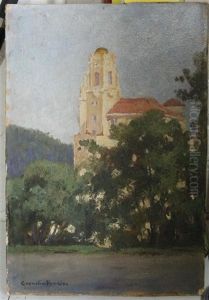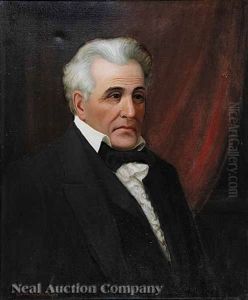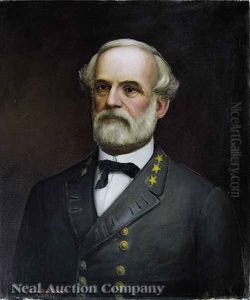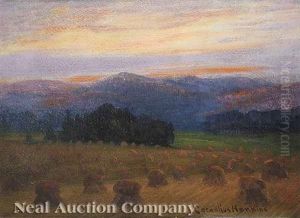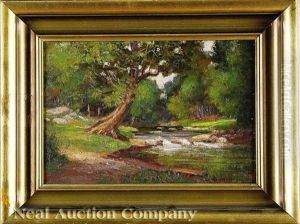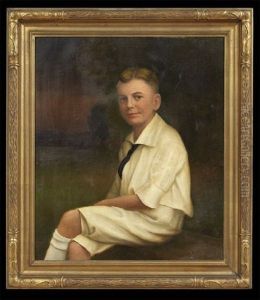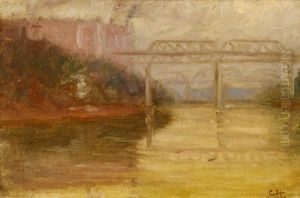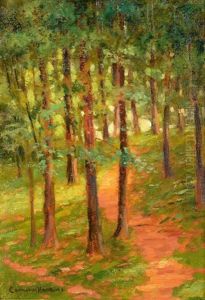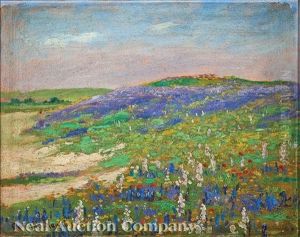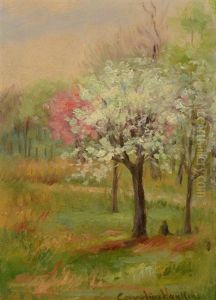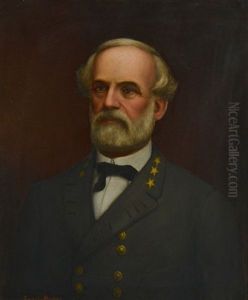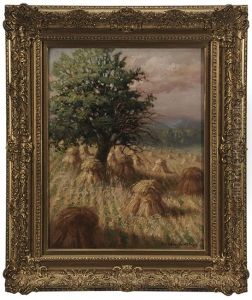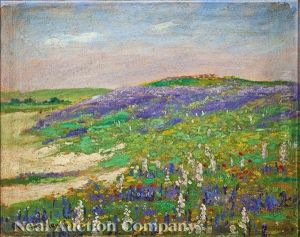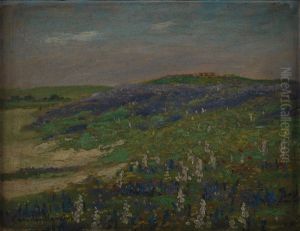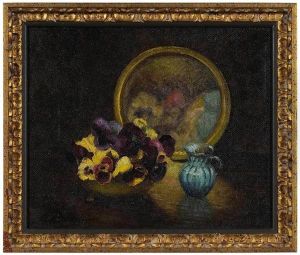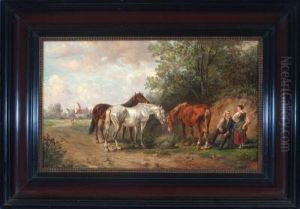Cornelius H. Hankins Paintings
Cornelius Hankins was an American artist, known primarily for his portraits and landscape paintings. Born on February 12, 1863, in Vicksburg, Mississippi, Hankins showed an early talent for art. During his formative years, he developed a keen interest in painting, which led him to pursue formal education in the field. He studied at the Art Students League in New York under the tutelage of renowned artists such as William Merritt Chase, a notable influence on Hankins' style and technique.
Hankins' work is characterized by the impressionistic influence of his time, with a focus on capturing the nuanced play of light and color. He was adept at portraying the subtleties of the Southern landscape and its people, contributing to the visual documentation of the region's culture and heritage. His portraits, often of prominent figures and ordinary citizens alike, are notable for their depth of character and the vivid representation of their subjects.
Throughout his career, Hankins traveled and worked in various parts of the United States. He spent significant time in Tennessee, where he became a central figure in the local art scene. Hankins also served as a teacher, sharing his knowledge and skills with a new generation of artists. He was a member of the Tennessee Art League and played a critical role in fostering the arts in the region.
Hankins' work has been exhibited in numerous galleries and institutions throughout his career and posthumously. His paintings can be found in both private collections and public institutions, serving as a testament to his contribution to American art.
Cornelius H. Hankins passed away on January 20, 1946. His legacy lives on through his artwork, which continues to be appreciated for its historical significance and its aesthetic quality. Hankins is remembered as a significant artist of his time, capturing the essence of the American South and its people with his brush.
